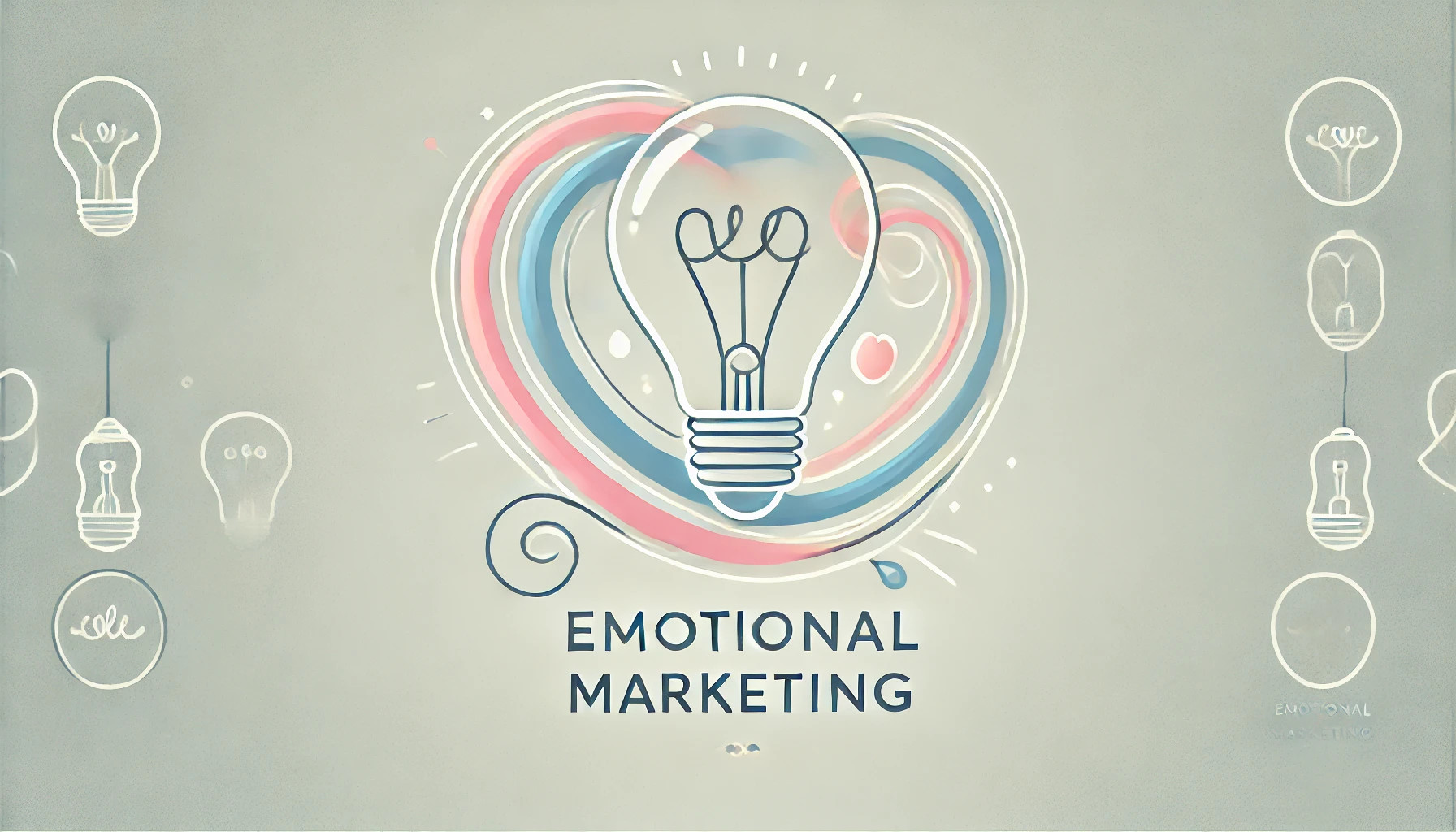Effective marketing today is impossible without establishing strong contacts between companies and consumers. One of the key elements of such interaction is the emotions that inspire trust and create the necessary response from the audience. In this article, we will tell you what emotional marketing is and what strategies are relevant to it. In addition, you will learn about the advantages and striking examples of its implementation, as well as the role of values in this concept.
The Concept of Emotional Marketing
Emotional marketing is a set of methods and tactics designed to create specific emotions in target audiences through a brand and its products via advertising and marketing campaigns. This approach goes beyond the traditional notion of marketing. It focuses on evoking feelings that help establish a deep connection between consumers and the brand. Instead of simply listing product features, emotional marketing focuses on creating meaningful impressions and experiences.
Unlike traditional marketing, which focuses on the functional benefits and characteristics of a product, emotional marketing strategies focus on creating experiences that evoke an emotional response. These emotions become the connecting link, turning a brand into something more than just a company — an object of trust, inspiration, or even support.
One of the main tools of emotional marketing is storytelling. Well-thought-out and expressive narratives can evoke joy, sympathy, surprise, or nostalgia, making the brand closer and more understandable to its audience. These stories resonate with the company's values and find a response in the hearts of customers, which forms a strong personal attachment.

The emotions triggered by such strategies stay in people's minds and often become the determining factor when choosing products or services. Companies that skillfully apply the emotional approach adapt their marketing strategies to create trusting and long-term relationships. Thanks to this, they increase sales and create an emotionally stable customer base that is ready to share positive experiences with others.
Emotional marketing is not just a trend but an important tool for modern business. It allows you to stand out in a highly competitive environment and establish strong connections with your audience through genuine emotions and impressions.
The Role of Values in Emotional Marketing
Emotional intelligence in marketing adds value to brand messages, thereby increasing the effectiveness of its promotional campaigns. The importance of this method is emphasized by the following factors:
- It is memorable: Emotionally rich content is closely connected to the personal experience, feelings, and emotions of consumers, so it is easier and faster to remember. Companies put their stories into people's memories through emotions, and in the future, they will associate them with a specific brand and its product.
- It influences the choice: An established emotional connection between a brand and its customers encourages the latter to buy exactly those products and services whose advertising has touched their soul. This concept works best when the consumer has to choose between products of different brands with the same price and characteristics.
- It instantly evokes a response: Another emotional marketing value is its ability to speed up the formation of a consumer's opinion about the promoted brand or product. Often, people cannot quickly determine their attitude toward a company and its goods or services. Activating the right emotions will cause their reaction immediately.
- It fosters loyalty: Having an emotional attachment to a brand ensures high loyalty of its audience over a long period of time. The growth of loyal customers is a direct result of the resonance of emotions that well-planned marketing campaigns create.
Strategies for Emotional Marketing
Emotional marketing is a powerful tool that allows brands to establish a deep connection with the audience, awakening strong feelings and associations in them. To successfully implement the best emotional marketing campaigns, it is important not only to understand what emotions you want to evoke but also to choose the appropriate strategies to achieve this goal.
Let’s look at key emotional marketing strategies that will help your brand stand out and achieve the results you want. Each of them helps you build communications based on values that are close to your target audience, which ultimately helps build loyalty and engagement.
Storytelling
Original, compelling, and realistic stories are a powerful tool that can captivate the audience, provoke a surge of vivid emotions, and leave a lasting impression. High-quality, relevant storytelling is one of the key strategies of emotional marketing, as it helps not only to evoke feelings but also to convey key brand messages in a clear and inspiring form.
Compelling stories create a deep emotional connection with the audience, strengthen their loyalty, and motivate them to actively engage with the brand. However, to achieve this effect, narrative themes should be carefully thought out. To evoke a sincere response, they should correspond to the company's values and reflect the experience and interests of the target audience.
For example, Nike's "You Can't Stop Us" campaign was a shining example of effective storytelling. The video, built on alternating shots from the lives of athletes of different ages, professions, and cultures, emphasized the strength, determination, and unity of people. This story not only inspired the audience but also emphasized the brand's values of overcoming difficulties and striving for the best.
Authenticity
If you want your content to create a lasting emotional connection with your audience, make sure it’s authentic. Brand authenticity means that every aspect of your communications — from advertising campaigns to daily interactions with customers — is consistent with your values, mission, and promises. This helps build trust and respect with your audience.
An important criterion for authenticity is transparent communication. It is highly valued by customers and helps build trust. Brand transparency is not limited to disclosing information about the product; it includes honest communication when problems or errors occur. Openness in such situations only strengthens trust.
An example of successful use of authenticity can be seen in the campaigns of Patagonia, an outdoor clothing and gear manufacturer known for its commitment to eco-friendly values. In its advertising materials, the company not only promotes its products but also actively raises environmental issues. This resonates with its audience. Moreover, Patagonia often openly shares information about its production processes and efforts to reduce its environmental impact, thus demonstrating the brand’s honesty and humanity.
Visuality
Well-chosen visuals are one of the key components of an emotional marketing strategy. With the help of relevant photographs, graphics, video, and audio, you can harmoniously illustrate the brand story, bringing it to life and enhancing the emotional response of the audience.
Audiovisual elements help companies harness the power of imagery to amplify their messages. Vibrant, original designs can create a memorable visual experience that not only enhances the emotional delivery but also strengthens the audience’s connection with the brand.


The Apple brand's "Shot on iPhone" advertising campaign focuses on showcasing the high quality of photos and videos taken with an iPhone. In the campaign, Apple uses the work of real iPhone users. The minimalist visual style is combined with the message of high quality and capabilities of Apple technology, which evokes emotions of admiration and trust in the brand among consumers.
Colors
Colors have a profound effect on the human conscious and subconscious, making them an extremely important component of branding. By choosing the right color scheme for your campaign, you can enhance the desired emotional response from your audience. Study the psychology of color and use this information when designing the visuals for your campaigns.
Consider the emotions that the color you choose evokes. For example, blue symbolizes reliability and trust, red attracts attention and arouses interest, yellow is associated with optimism and warmth, and green symbolizes harmony and balance.
A striking example of the use of color is the Starbucks brand, which actively uses green in its packaging and logo. This color is associated with nature, freshness, and balance. It emphasizes the brand's focus on sustainability and quality and also evokes feelings of calm and comfort in consumers.
Benefits of Emotional Marketing

Emotional marketing offers brands a unique opportunity to build deeper and more lasting relationships with their audiences. Properly designed emotional marketing campaigns can evoke powerful emotions that will stimulate positive brand associations and contribute to their successful development. They not only create a short-term reaction but also strengthen long-term connections with customers, laying the foundation for sustainable brand growth.
Key benefits of emotional marketing:
- Strengthening the bond with the audience: By touching human emotions, companies establish contact with their audience on a deep personal level. This creates the preconditions for establishing stable long-term relationships between them.
- Increased brand trust: Emotional connections drive increased trust and customer loyalty. The more positive emotions people feel about a brand’s values, the more likely it is that many of them will become loyal followers.
- Self-identification with the brand: Emotional motives in marketing help the audience feel connected to the brand values. This helps to form a sense of belonging and identification with it.
- Making the brand more relatable: Empathetic marketing helps the brand evoke strong impressions and memorable emotions. This gives it human features and makes it closer and more understandable to the audience.
- Increased engagement and retention: Emotionally charged marketing campaigns are significantly better at capturing consumers' attention and retaining their interest than campaigns that lack an emotional component.
- Strengthening the first impression: Emotional marketing allows a brand to create a vivid and memorable first impression on the target audience. Products and brands that evoke deep emotions remain in the memory of consumers for a long time, increasing their chances of success.
- Creating a sense of community: Using a holistic approach in marketing campaigns helps a brand create a sense of belonging among its audience.
Case Studies
Successful campaign examples are the best way to understand how emotional marketing theories are put into practice. Here are some of the most impressive emotional marketing strategy examples that demonstrate how brands are using emotions to connect with their audiences. They will help you understand which approaches can resonate, increase engagement, and inspire customers.
"Share a Coke" from Coca-Cola
The famous soft drink manufacturer carried out a successful marketing campaign inviting customers to share Coca-Cola with their loved ones and friends. As part of the campaign, the brand changed the labels of the bottles: the iconic logo was replaced with popular names such as Kylie, Jason, and others. This decision turned each bottle into a personalized gift. The warm idea, supported by original visualization, not only increased audience engagement but also significantly increased sales.
"Just Do It" from Nike
One of the most striking emotional marketing examples is the famous "Just Do It" campaign from the sportswear and footwear brand Nike. The short and succinct slogan, supported by visuals, masterfully emphasizes the themes of motivation, determination, empowerment, and goal achievement. This message evokes a powerful emotional response in the target audience, forming a strong connection between the brand and its customers. The commercial featuring professional and aspiring athletes who overcome difficulties on the way to their goals clearly demonstrates these values and inspires the audience.
"Belong Anywhere" from Airbnb
Popular home-booking service Airbnb has launched a "Belong Anywhere" campaign based on real stories of travelers and hosts. These narratives promote the idea of belonging: Airbnb customers can feel at home anywhere in the world, no matter where they are.
The campaign's visual and textual elements are aimed at creating a sense of inclusivity, comfort, and pleasure from travel among the audience. Videos and photographs of real guests and hosts who shared their unique stories strengthened the emotional connection of the brand with the audience, making it more relatable and human.
“2021 Big Game Commercial Featuring Jessica Long” from Toyota
Toyota has created a vibrant and emotionally memorable advertising campaign based on the inspiring story of American Paralympic swimmer Jessica Long. The video shot as part of the campaign showed the life of the famous athlete, who managed to turn her disability into a sporting triumph.
The campaign emphasizes willpower, determination, and overcoming challenges, which evoked deep emotions in viewers. This approach not only attracted attention to the brand but also strengthened its image as supporting inclusivity and overcoming barriers.
Conclusion
Emotional appeal marketing is one of the most effective marketing campaign formats today. Fascinating stories about people and their relationships help brands build strong, long-term relationships with customers and stimulate audience interest in their products.
The most important factors for effective emotional marketing campaigns are authenticity, genuineness, and relevance. By paying attention to these components, you can touch the deep emotions of consumers and achieve measurable success. Emotional marketing provides brands with the opportunity to not only attract attention but also to form long-term relationships. This leads to increased loyalty and encouragement of repeat purchases.
Looking to automate processes and boost productivity? Try our SaveMyLeads service — no specialized skills required. Explore integration examples to see how straightforward it is to get started:
